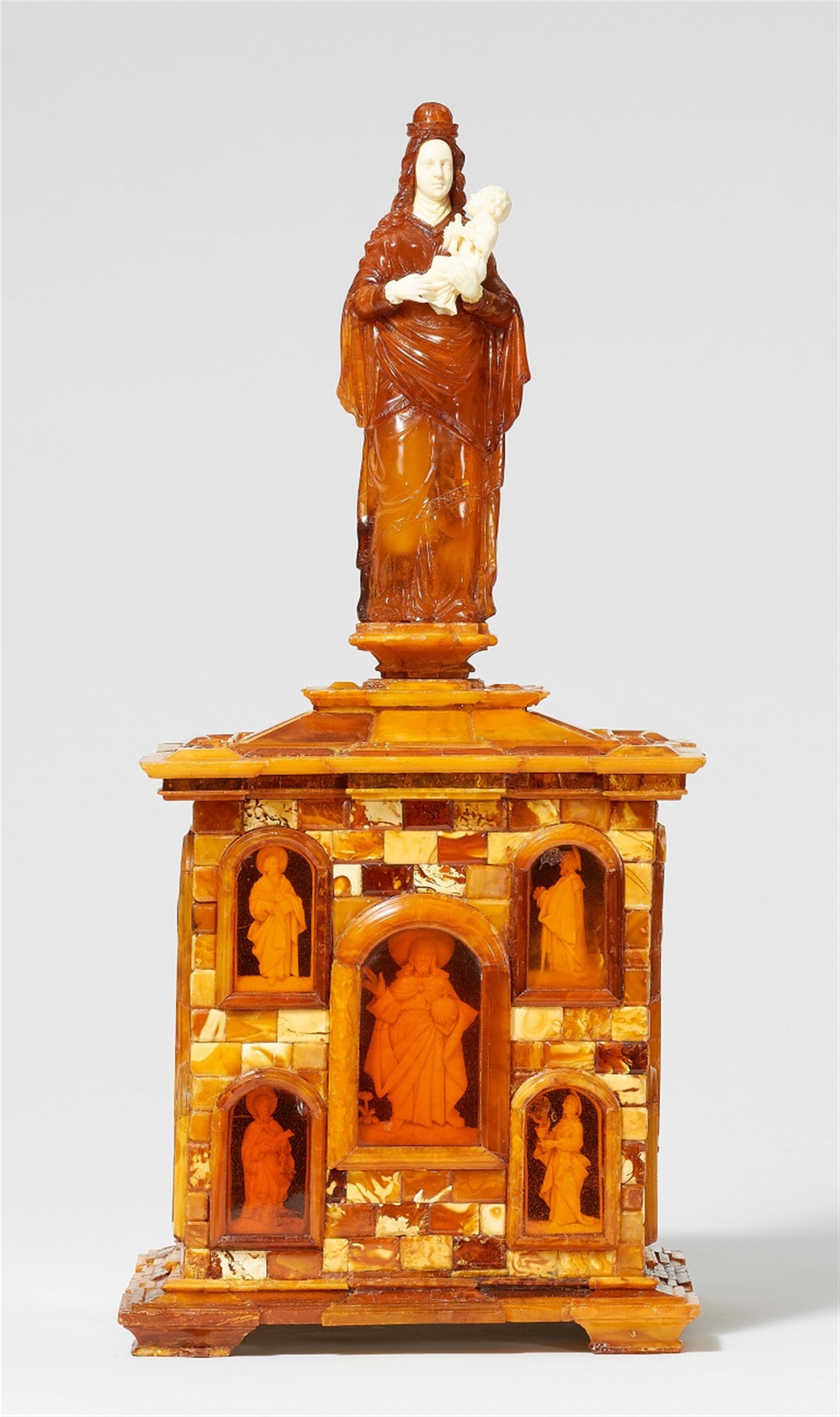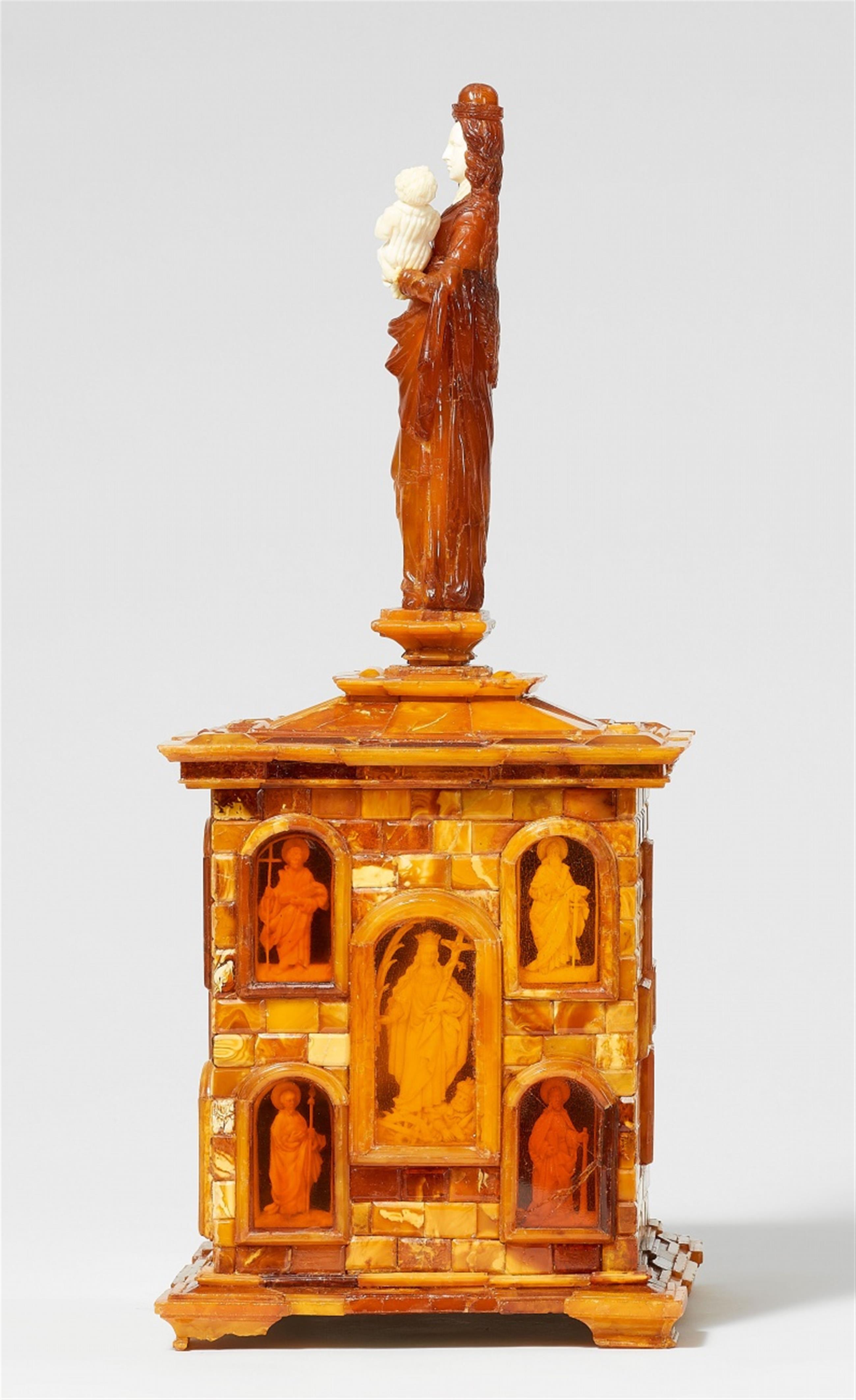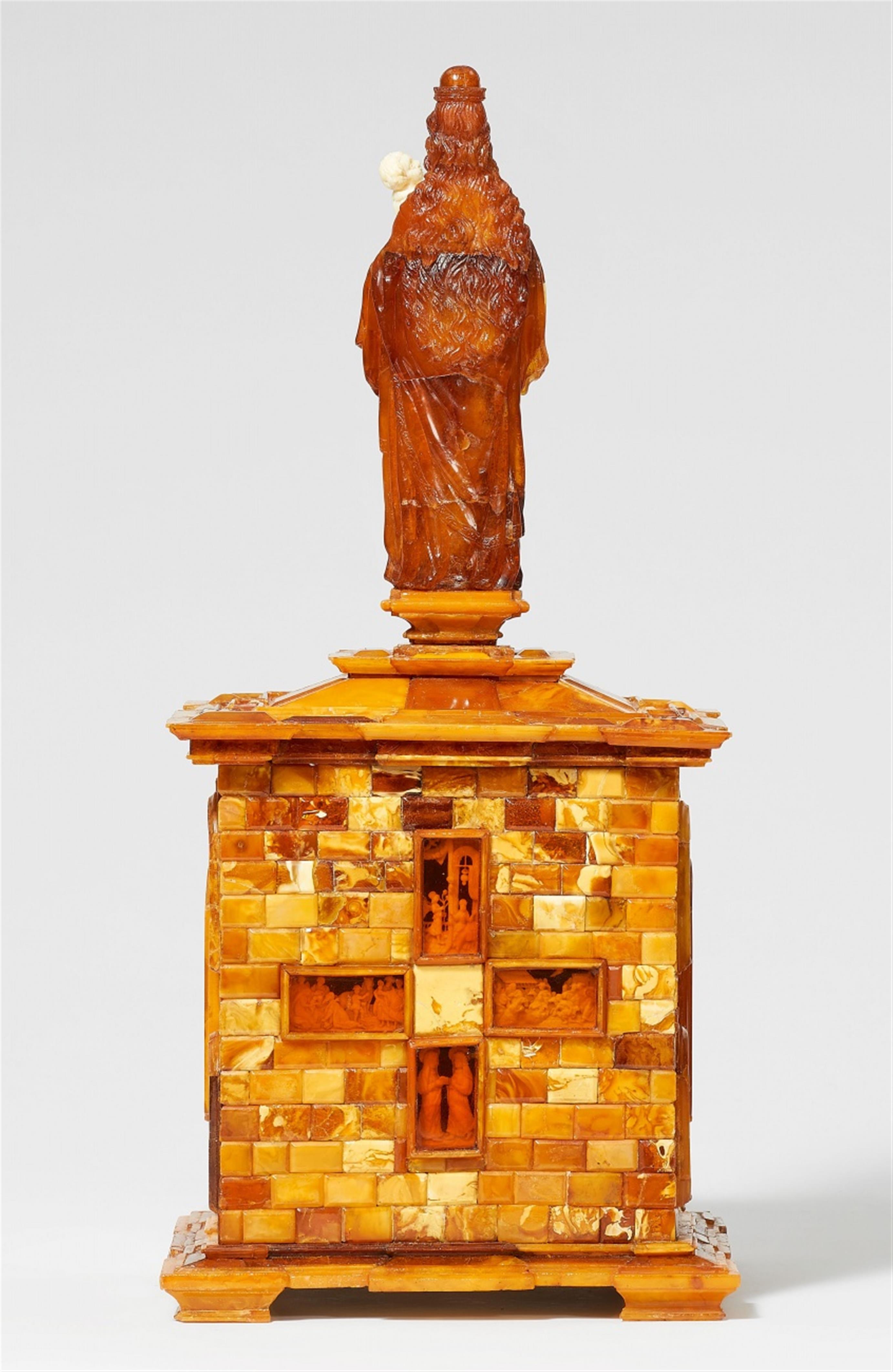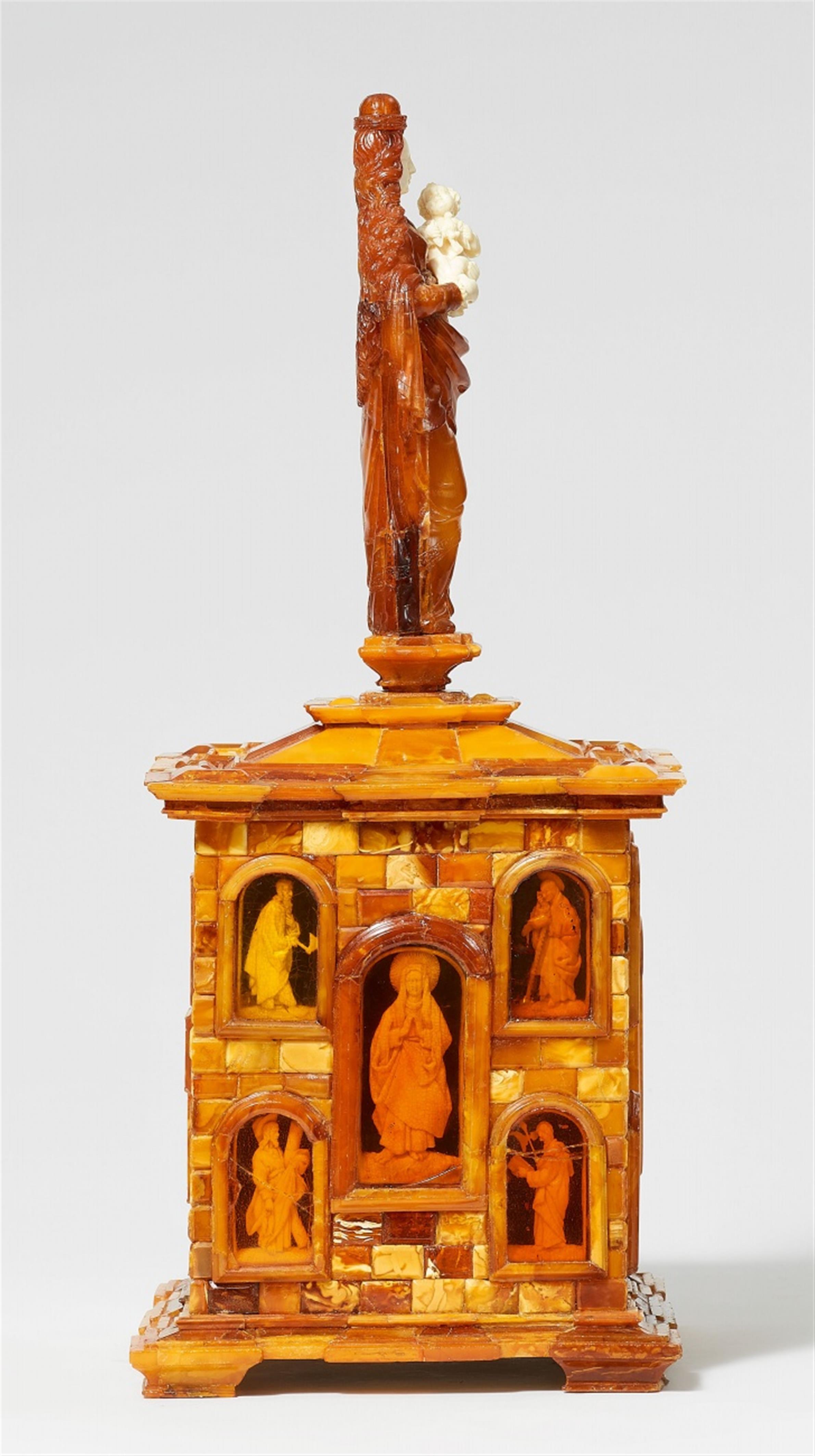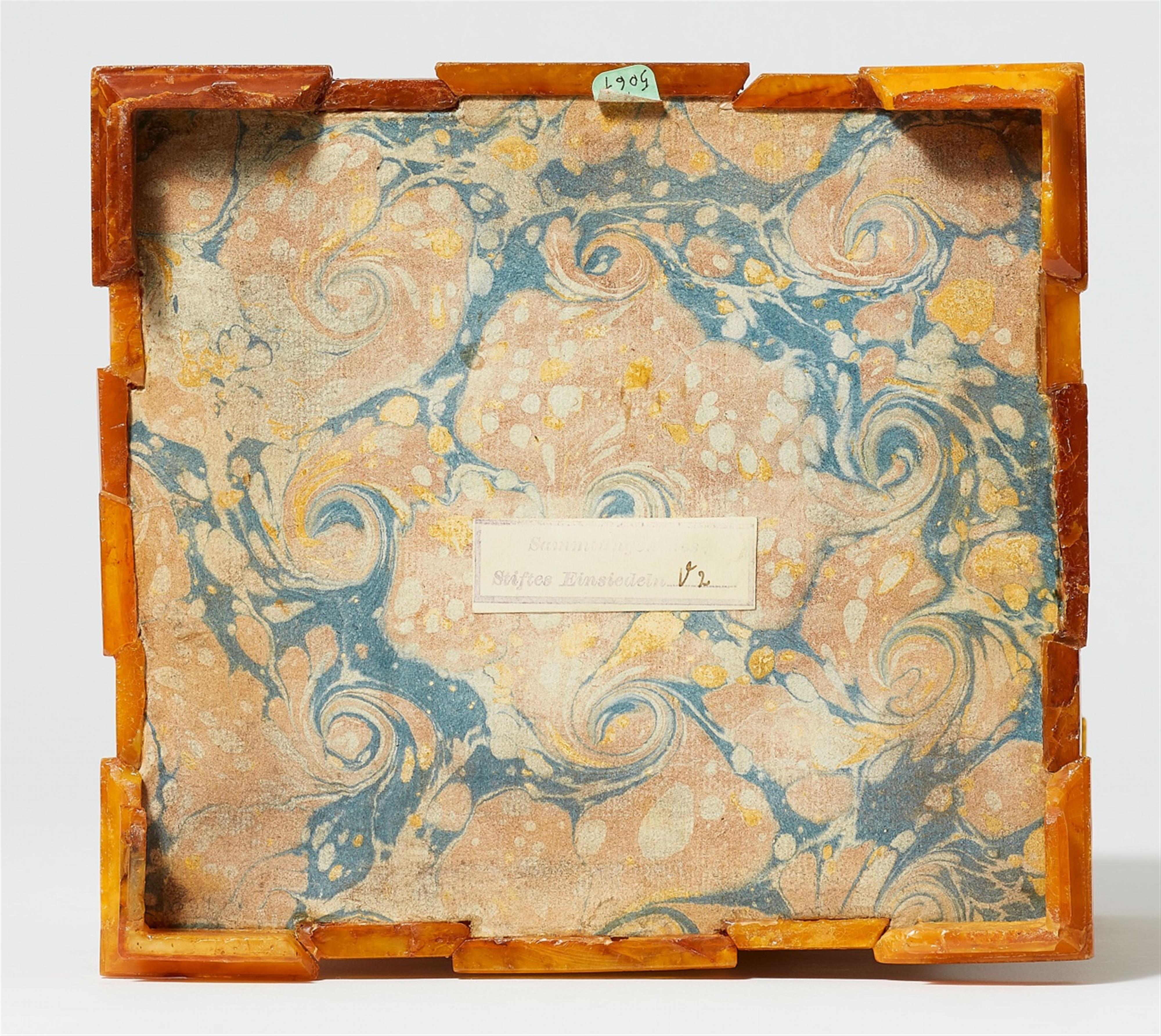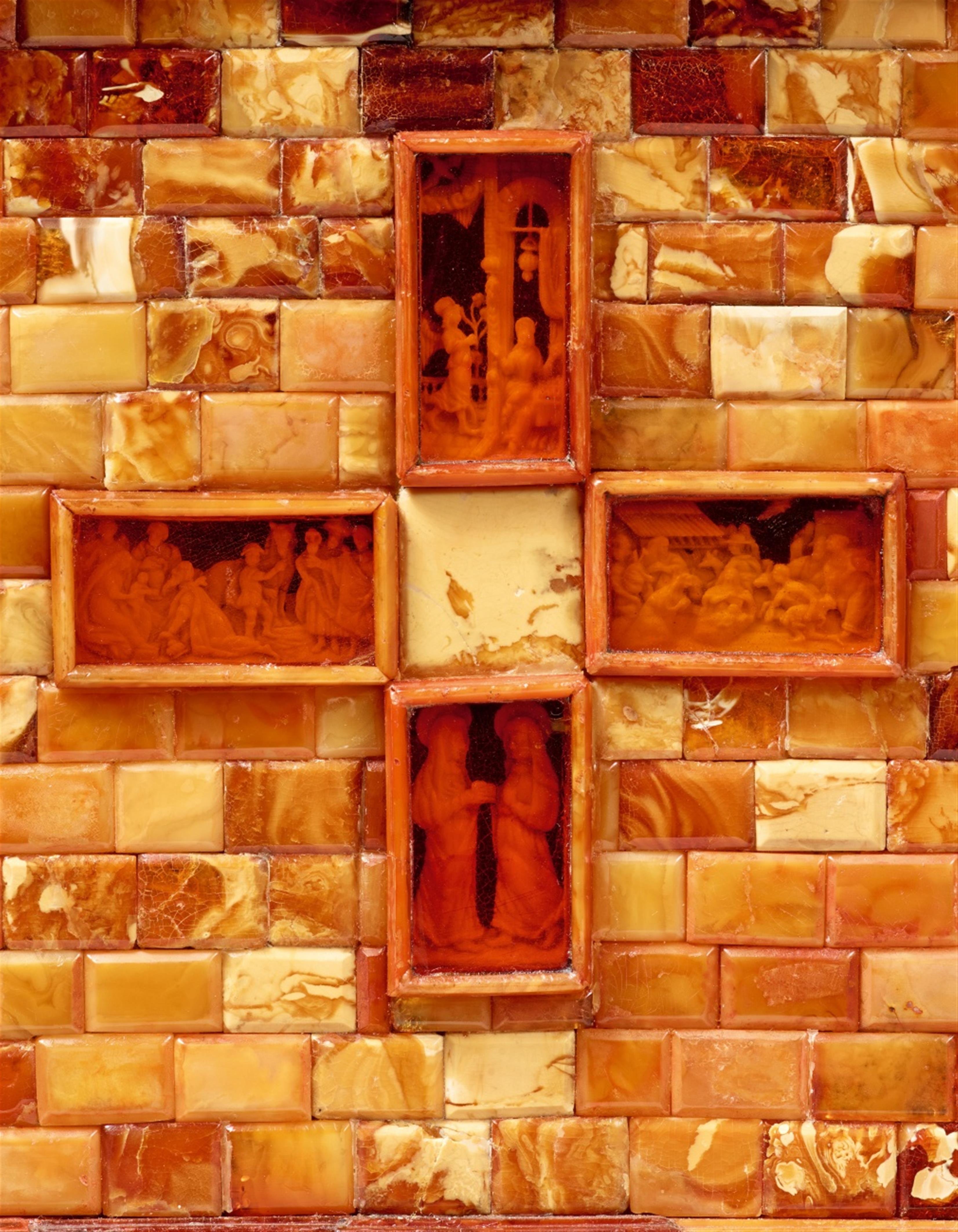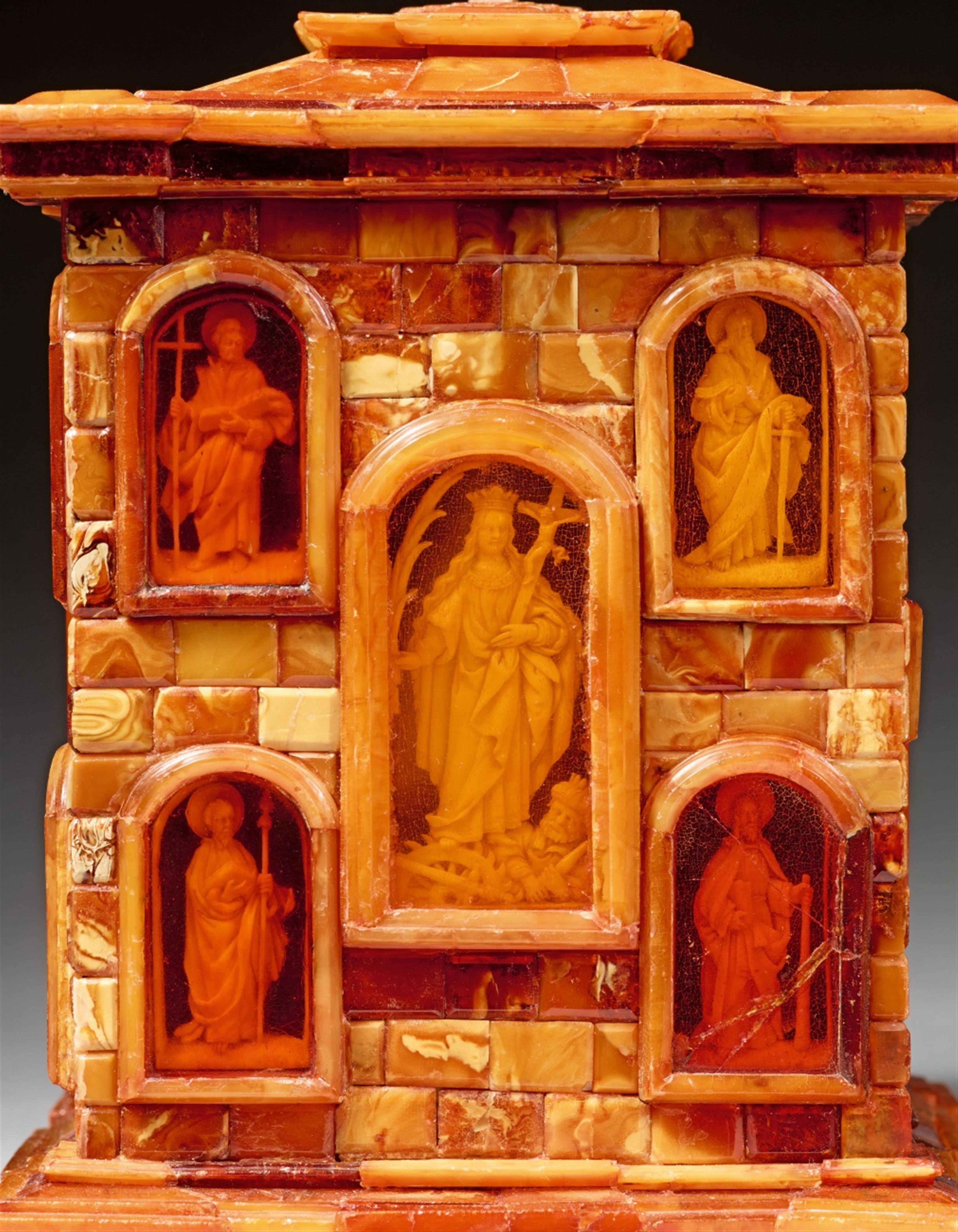An important amber altarpiece from the treasury of Einsiedeln Abbey
Pale, dark and translucent amber, partially backed with gold foil and mounted on a wooden corpus, marbled paper, ivory. Comprised of two sections: An architectural pedestal and a figure of the Virgin and Child. Decorated on all four faces to resemble brickwork (made from oblong, flat, and faceted amber veneer pieces), the front and both sides with four arched windows surrounding a large, central window, the back with four windows arranged in the shape of a cross. The windows with raised mouldings and translucent amber panes revealing finely carved ivory reliefs beneath with a depiction of Christ as Salvator Mundi surrounded by Bartholomew, James the Great, Peter and John. The left side with the Virgin Mary surrounded by Saints Matthew, Simon, Andrew, and Jude. The right side with Saint Catherine surrounded by Saints Philipp, Paul, Thomas, and James the Less. The reverse with four miniature carvings of scenes from the New Testament: The Annunciation above and the Visitation below, the Adoration of the Magi on the left and the Adoration of the Shepherds on the right. With a printed and hand-written label on the base inscribed “Sammlungen des Stiftes Einsiedeln V2”. H 41, W 18.7, D 16.9 cm.
Gdansk, mid- to second half 17th century, traditionally attributed to Christoph Maucher.
This altarpiece is a magnificent and significant example of amber and ivory sculpture. Of square section and designed to resemble architecture, the piece is entirely encrusted with amber marquetry. Only the face and hands of the Virgin, the infant Jesus with the dove in His hands, and the figures in the window niches are carved in ivory. The contrast between the white of the ivory and the amber, shimmering in a myriad of honey coloured tones and backed with gold foil in places to enhance its effect, has an incomparably precious effect.
The altar is traditionally attributed to the amber carver Christoph Maucher. A native of Swabia, Maucher moved to Gdansk around 1670 and began carving in amber in 1685. He proudly signed his most important work, the Vienna Victory Monument "Apotheosis of Emperor Leopold I": "CHRISTOPH MAUCHER SCULPTOR". It is his only known signature and the sculpture is the one upon which all further attributions have been based. Sabine Haag describes his figures as follows: "Maucher's figural type - stocky, slightly squat figures with round faces, long noses and small mouths - bears unmistakably Dutch traits" (cat. Vienna 2005, no. 65). The fact that the Virgin depicted in this altarpiece appears so different may be due to the fact that the artist based her features upon the monastery's miraculous image of the Black Madonna.
The object has been housed in the treasury of the Benedictine monastery of Einsiedeln since 1690, as stated in the label on the underside of the piece. Einsiedeln Monastery is the most important pilgrimage site in Switzerland and is a stop on the way to Santiago de Compostela. Founded in 835 by the hermit Meinrad, the religious community flourished during the Middle Ages and expanded with numerous territorial possessions. The medieval monastic buildings, devastated by numerous fires, were replaced by buildings in the late Baroque style. The famous late Gothic miraculous image is a Black Madonna with the infant Jesus, who holds a bird in his hand like the figure in this altarpiece.
For the exhibition in the Old Ecclesiastical Treasury in Vienna, Wilfried Seipel collected numerous sculptures and devotional images made of amber. The central and most impressive exhibit was the seven-story amber altar, measuring almost two meters, belonging to the Vienna Treasury, which the Great Elector presented to his sister Luise Charlotte of Brandenburg as a wedding gift in 1645 and which King Frederick III then passed on to Emperor Leopold I in 1700. The Vienna altarpiece is the largest 17th century work of art and and devotional object in amber known to us today.
A statue of the Great Elector together with his wife Luise Henriette, carved in the round and placed together on a narrow oblong amber box as if on a pedestal, adorns the cover of the catalogue by Gisela Reineking von Bock. The object is now housed in the Staatliche Kunstsammlungen in Kassel.
The emperor was so enamoured of the material's aesthetic qualities, colour and transparency that he also demanded amber objects made especially for him. One of the most beautiful goblets of the period, the "Chigi goblet" made from amber and with a double-headed eagle in ivory, is today one of the most valuable objects in the Lemmers-Danforth collection in Wetzlar (it was auctioned and sold by Lempertz Cologne in 1961). According to tradition, the goblet was a gift from Emperor Ferdinand III to Fabio Chigi. All these large and important amber objects were made for the Prussian-Brandenburg court, the Great Elector, or even for the Emperor himself, or were acquired by them for their own art collectors or as imperial gifts. This magnificent altar was undoubtedly also made for an important order, but today nothing is known about the commission, the donor or the recipient.
A similar figure of the Virgin on the Crescent can be found in Jasna Gora monastery in Czestochowa, bearing the date 1611 (inv. no. JGC-1/16). The Madonna and Child in the Georg Laue Collection (Munich 2006, no. 34) also appears to have been carved by the same hand, although the face is carved from opaque yellow amber instead of ivory. The body is worked in a similarly flat manner with long curly hair cascading down the figure's back, and the child also sits on the mother's right arm like a small adult. This and similar works, when not historically catalogued as "North German" or "Baltic", are attributed today to anonymous carvers active in Gdansk or Königsberg during the first half to the middle of the 17th century. Despite this, the fine quality of this piece and the very characteristic incorporation of ivory make it not implausible to suggest that Christoph Maucher was the creator of this magnificent work.
Provenance
In the treasury of Einsiedeln Abbey from 1690 to recent years.
Literature
Meinz, Ein norddeutscher Hausaltar mit Bernstein-Inkrustationen, in: Jahrbuch des Altonaer Museums, Hamburg 1964, p. 143 ff. Meinz, Die Bernsteinsammlung, in: Jahrbuch des Altonaer Museums, Hamburg 1970, p. 9 ff. Reineking v. Bock, Bernstein. Das Gold der Ostsee, Munich 1981. Theuerkauff, Nachmittelalterliche Elfenbeine, Staatliche Museen Preußischer Kulturbesitz Berlin 1986, p. 214 ff. Koeppe, Die Lemmmers-Danforth-Sammlung Wetzlar. Europäische Wohnkultur aus Renaissance und Barock, Heidelberg 1992, cat. no. GO33, p. 496 ff. Seipel (ed.), Bernstein für Thron und Altar. Das Gold des Meeres in fürstlichen Kunst- und Schatzkammern, KHM Vienna 2005. Werner/Laue, Bernstein Sigmar Polke Amber, New York-Munich 2006. Laue (ed.), Bernstein-Kostbarkeiten europäischer Kunstkammern, Munich 2006.

